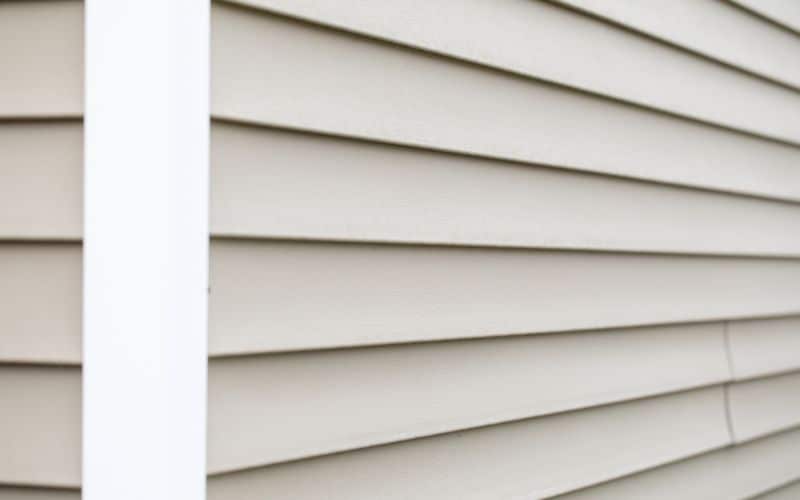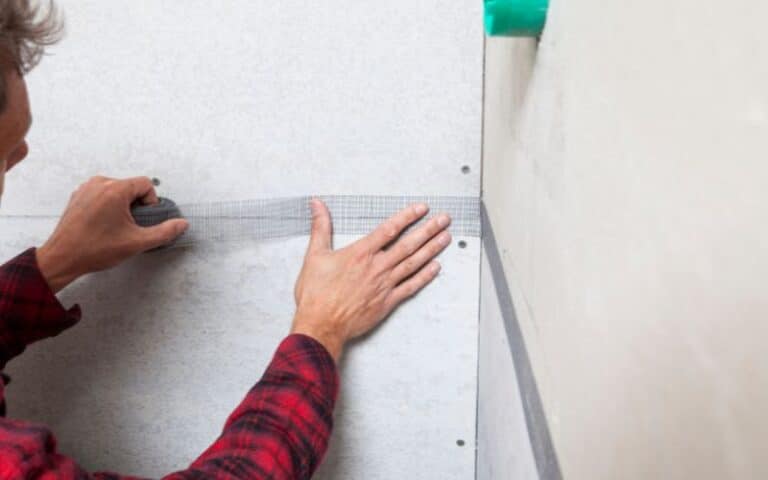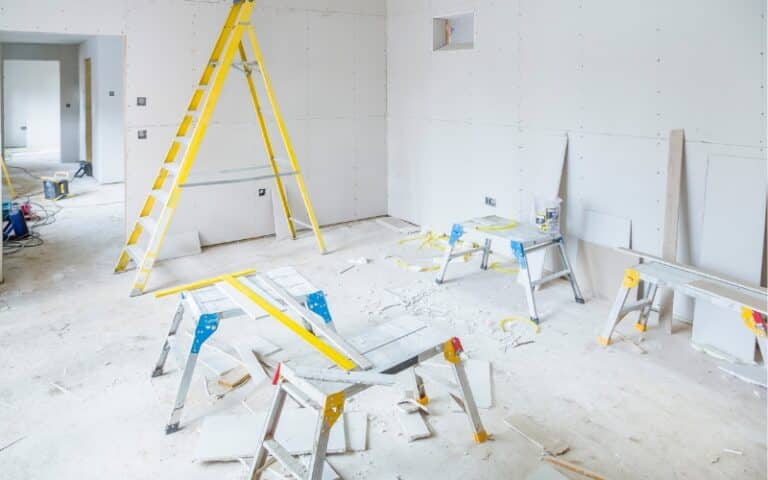Deciding which type of fastening is better for your vinyl siding might be difficult, especially if your region has no nailing rule of thumb.
The nail type can determine how good the vinyl siding on your exterior wall will look. Therefore, it is essential to use the better option to get great results.
When deciding the best nail material for your vinyl siding, you should weigh the benefits and cons of nails and screws for the siding.
Nails are better for vinyl siding because they are easy and fast to manage and drive through vinyl siding. Screws are more secure due to their threaded and rough shaft; however, screws can be more challenging to drill through for vinyl siding. Moreover, nails can hold the siding and secure it against strong winds, unlike screws.
Ready for a Roofing Quiz?
Ready for a Drywall Quiz?
Should I Use Screws or Nails for Vinyl Siding?

Using nails for your vinyl siding is a better option screw due to its smooth shaft and ease of use on the siding. Therefore, it is advisable to use nail fasteners for your vinyl siding.
Screws have a rough shaft and cost more to drive into the siding. In addition, to use a screw, you will need a screwdriver, which can slow down the fastening process.
Using screws to fasten your vinyl siding will also reduce productivity, and its shaft can damage the siding. Nails do not have threads but a smooth shaft for easy fastening.
However, if you use a power screwdriver, you can install your screws in the vinyl without any hassles. It will also increase the speed at which you are installing the screws.
Below is a detailed comparison between nails and screws:
#1. Product Type
Though nails are similar to screws based on purpose, they have different features. Nails have a broader head with a smooth shaft, with no threads.
Moreover, it holds well against intense and windy weather; therefore, it will not snap easily. Contrastly, screws have coarse threads around their shaft.
Though they have a higher holding resistance than nails, they might snap while in strong winds.
#2. Benefits
It is more beneficial to use nails for vinyl siding compared to screws. For instance, nails have a large head and do not pop out of place easily from pressure.
It is also smooth and slides quickly into vinyl siding without any problem. Moreover, it will not break from heavy influence.
In contrast, screws have lesser benefits for vinyl siding. For screws, you do not need many long screws for fastening vinyl siding.
However, ensure you do not tighten the screw to allow room for contraction, or the screw will loosen and fall off.
#3. Varying Features
Both nails and screws have unique features. These characteristics make them different and determine which fastener is better for vinyl siding.
Aluminum nails of two inches hold the siding in place and last for a long time due to their non-rust property. It is also easy to use a hammer to drive it through the siding due to its flat head.
Some stainless steel nails also come in varying colors that match the vinyl siding, with zinc finishing for better rust resistance.
In contrast, screws have rough threads in their shaft, which gives them a stronger hold on the siding.
However, they do not have wide heads, so you will need screwdrivers to drive the screws through the vinyl siding. The small heads also make it easy for the fasteners to pop out.
#4. Tools Required
You can easily fasten vinyl siding with a nail and a hammer since the siding is a soft material.
Though you can use a hammer with a screw, it might damage the vinyl siding. You can alternatively use a screwdriver or a fastener.
Benefits and Cons of Using Nails and Screws for Vinyl Siding
#1. Nails
#1. Pros
- It is smooth, fast, and easy to use.
- It holds the vinyl in place
- It is more cost-effective
#2. Cons
- It has a lower hold than screws due to its smooth shaft.
#2. Screws
#1. Pros
- It has a stronger hold due to its rough threaded shaft.
#2. Cons
- It does not hold vinyl siding for long due to its short shaft.
- It consumes more time to fasten, thereby reducing productivity.
- It is more expensive.
Below is a table showing a comparison between nails and screws for vinyl siding:
| Factors | Nails | Screws |
|---|---|---|
| Product Type | It is smooth, fast, and easy to handle | It has a thread on the shaft, which makes it difficult to use |
| Benefits | Has more benefits | Has lesser benefits |
| Cost | Lesser cost | Higher cost |
| Feature | It holds vinyl siding securely | It does not last long on vinyl siding |
| Tools required | Hammer | Screwdriver or Fasteners |
What Screws Are Best for Vinyl Siding?
Zip screws are the best type of screws for vinyl siding. It has a fine threaded design that can easily pierce through soft or hard materials.
Its ability to penetrate through vinyl siding comes from its threading design, which extends from the shaft top to its end.
Once the first part of the threaded shaft goes through the vinyl siding, the second part catches and holds the material in place.
Some zip screws have a hexagonal head shape, making it easy to secure the siding after installation. It also comes in different colors to match the color of your vinyl siding.
You can also use a Phillips head screw since you can easily install it with a Phillips screwdriver.
Do You Nail Vinyl Siding Corners Tight?
It would be best not to nail vinyl siding too tightly, as it could cause the nail to loosen and pop out. In addition, the siding panel will buckle and expand if you nail it too tightly.
Ensure the nails have about 1/8″ to 1/16″ inches of space between the nail head and the surface of the vinyl siding to allow easy movement when the siding contracts and expands.
Also, avoid nailing the visible part of the vinyl siding (face nailing), as it can ruin your siding and cause the panel to buckle with a temperature change.
Center the nails in the open parts of the siding to allow expansion and contraction of the vinyl siding. Also, fasten the nails straight and at regular levels to avoid panel buckling and distortion.
What Kind of Nails Do You Use to Install Vinyl Siding?
Due to its corrosion-resistant properties, you need galvanized steel or aluminum nails to install vinyl siding.
The best nail length for fastening vinyl siding is about 1¼ inches to 2½ inches. The shank of the aluminum nail should be ⅛ inches, while the head should have a width of at least 5/16 inches.
However, a unique nail for vinyl siding is known as a siding nail. You can easily install the nail with a siding nailer.
#1. Siding Nails
The nails stay in place once you install them, so once the nails penetrate the siding, they will not easily come off.
Vinyl siding, however, does not require replacement as often as you replaced shingles. Therefore, siding nails are ideal for fastening vinyl siding to your exterior wall.
Here are some features of siding nails:
- Siding nails are ring-shanked to allow the nails to hold the siding firmly in place.
- It also requires you to leave at least one inch of space between the siding nail head and the siding panel.
- Though roofing and siding nails are similar, they serve different purposes, and their installation tools are slightly different.
- Vinyl siding tends to contract and expand from heat due to its material. For this reason, siding nails attach to the siding once it penetrates.
- This property will help you prevent possible cracks around the nail area, which can occur as the temperature of the weather changes.
- Siding nails are less cost-effective than alternative aluminum or stainless steel nails.
Conclusion
It would be best if you fastened your vinyl siding properly to keep it from future damage. For this reason, you must use the best nailing material for your vinyl siding.
You can use nails or screws to fasten your siding to the exterior wall of your home, though you must use corrosion-resistant nails that would hold the siding panel in place.






